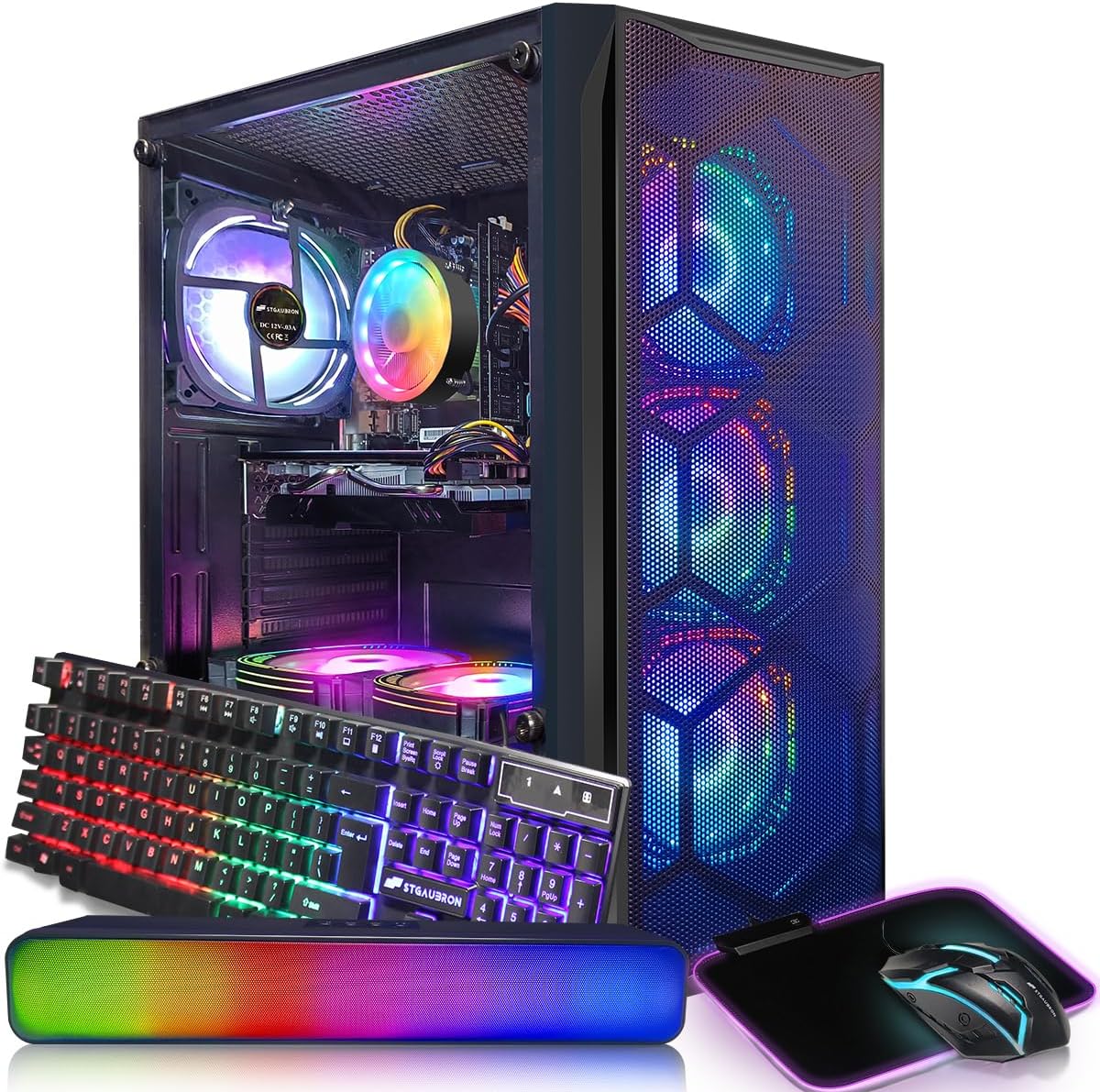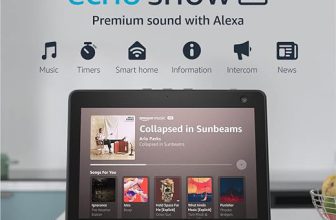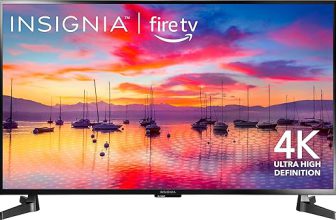
Purchasing a PC online can feel overwhelming, especially with the countless options and specifications available. I understand how challenging it can be to navigate through the sea of choices while trying to find the perfect fit for your needs. That’s why I’ve created this ultimate checklist to guide you through the process. Whether you’re a gamer, a professional, or someone just looking for a reliable machine, this checklist will help you make informed decisions and steer clear of common mistakes. Let’s simplify your online shopping experience together.



Understanding Your Needs
Before you embark on the adventure of purchasing a new PC, it’s essential to pause and assess your specific needs. This foundational step will guide you in making informed decisions that align with your requirements, ensuring that you invest in a machine that serves you well.



Define Your Primary Use
The first aspect to contemplate is how you plan to use your PC. Different uses dictate different specifications. Here are the most common categories:
- Gaming: If you’re a gamer, you’ll need a powerful machine that can handle high graphics settings and maintain smooth frame rates. Look for PCs with dedicated graphics cards like the NVIDIA GeForce RTX 3060 or AMD Radeon RX 6700 XT. For instance, the Alienware Aurora R14 is a solid choice for gamers, offering various customization options tailored to performance.
- Work: For professional tasks like graphic design, video editing, or programming, focus on machines that can handle demanding applications. The Apple MacBook Pro M2 is highly regarded for its performance in creative fields, while the Dell XPS 15 offers a powerful Intel processor and a high-resolution display, making it ideal for multitasking and media consumption.
- Casual Browsing: If your primary activities revolve around web browsing, streaming, and light productivity tasks, you might not need extensive power. A laptop like the Acer Aspire 5 provides a solid experience for everyday tasks without breaking the bank.
Performance Requirements
Once you’ve defined your primary use, it’s time to consider performance requirements. This includes:
- Processor (CPU): The CPU is the brain of your PC. For gaming, a multi-core processor like the AMD Ryzen 7 5800X or Intel Core i7-12700K can provide the necessary power. For work-related tasks, especially those involving multitasking, aim for at least a quad-core processor.
- Memory (RAM): The amount of RAM you need depends on your use case. For gaming, a minimum of 16GB is recommended, while professionals working with large files may benefit from 32GB or more. The Corsair Vengeance LPX 16GB DDR4 RAM is a good option for gamers and professionals alike.
- Storage: Opt for a combination of SSD and HDD for optimal performance. An SSD (like the Samsung 970 EVO Plus) ensures quick boot and load times, while an HDD can provide additional storage for larger files at a lower cost.
Budget Constraints
Your budget will play a pivotal role in your purchasing decision. Here’s how to align your needs with your budget:
- Entry-Level ($500 – $800): For basic tasks, consider the HP Pavilion Desktop, which offers decent performance for casual users.
- Mid-Range ($800 – $1,500): For a balanced experience, the Lenovo Legion 5 is a great choice for gamers and professionals alike, providing solid performance without going overboard on cost.
- High-End ($1,500 and up): For top-tier gaming or professional workstations, look into the Razer Blade 15, which combines premium build quality with high performance.
Practical Examples of Needs Assessment
To illustrate the importance of understanding your needs, let’s look at a couple of scenarios:
- Scenario 1: The Casual Gamer
- Use: Primarily gaming, some light work (documents, browsing)
- Recommended Specs: Intel Core i5, 16GB RAM, NVIDIA GTX 1660 Super
- Example Product: ASUS ROG Zephyrus G14 – a compact yet powerful gaming laptop that fits within a mid-range budget.
- Scenario 2: The Creative Professional
- Use: Video editing, graphic design, heavy multitasking
- Recommended Specs: Apple M2 chip, 32GB RAM, 1TB SSD
- Example Product: Apple MacBook Pro 14-inch – renowned for its performance and superior display, ideal for creative tasks.
Key Points to Remember
- Assess your primary use to determine the necessary specifications.
- Balance performance requirements with budget constraints for an optimal purchase.
- Consider future-proofing your PC by investing in slightly higher specs if your usage may grow.
By carefully evaluating your needs, you can ensure that your investment in a new PC will meet your expectations and provide a satisfying user experience.
Researching Brands and Models
When it comes to making a purchase, especially for significant investments like appliances, electronics, or vehicles, conducting thorough research is crucial. With countless brands and models on the market, understanding how to compare them effectively can help ensure you make an informed decision. This section will guide you through the process of researching brands and models, reading user reviews, identifying reputable options, and checking warranty and customer support details.
![HIDevolution [2024] ASUS ROG Zephyrus G14 GA403UV [White] 14" 3K OLED 120Hz, 4.0 GHz Ryzen 9 8945HS, RTX 4060, 16 GB LPDDR5X RAM, 1 TB PCIe SSD, Windows 11 Home](https://m.media-amazon.com/images/I/61NBarcszUL._SS520_.jpg)


Comparing Different Brands
Different brands often have varied reputations, features, and price points. When comparing brands, consider the following aspects:
- Reputation: Look for brands known for quality and reliability. For example, when considering washing machines, Whirlpool and LG are often praised for their longevity and performance.
- Features: Each brand may offer unique features. For instance, Samsung washing machines come equipped with Smart Control technology, allowing users to manage wash cycles via smartphone apps, while Bosch focuses on energy efficiency and compact design.
- Price Range: Prices can vary significantly across brands. Compare similar models from various brands to get a sense of the average cost for the features you desire.
Example Comparison Table
| Brand | Notable Features | Price Range |
|---|---|---|
| Whirlpool | Durable, user-friendly, reliable | $600 – $1,200 |
| LG | Smart technology, energy efficiency | $700 – $1,500 |
| Samsung | Innovative features, connectivity | $650 – $1,800 |
| Bosch | Compact design, eco-friendly | $800 – $1,400 |
Reading User Reviews
User reviews can provide valuable insights into how a product performs in real-world scenarios. Here are some strategies for effectively reading and interpreting reviews:
- Look for Patterns: Focus on recurring themes in reviews. If multiple users mention a specific issue with a model (e.g., a common malfunction in the iRobot Roomba 980), it’s a red flag to consider.
- Check Credibility: Consider reviews from reputable websites like Consumer Reports or dedicated tech review sites like CNET, as they often provide unbiased, thorough evaluations of products.
- Balance Positive and Negative Feedback: While five-star reviews are appealing, pay attention to one-star reviews to understand potential drawbacks. This balanced approach will give you a more comprehensive view of the product.
Examples of Review Sources
- Consumer Reports: Offers detailed product testing and unbiased ratings.
- Amazon: A great platform for customer reviews, often containing pictures and videos.
- YouTube: Video reviews can offer visual demonstrations of a product’s performance.
Identifying Reputable Models
Once you’ve narrowed down your brand choices, it’s time to identify specific models that fit your needs. Here are some tips to consider:
- Feature Sets: Ensure that the model has the features you need. For instance, if you require a powerful blender, the Vitamix 5200 is known for its high performance and versatility.
- Product Longevity: Research the typical lifespan of the product. For example, Canon cameras, such as the Canon EOS R5, are renowned for their durability and longevity.
- Model Variants: Be aware that brands often have several variants of a model. For instance, the Dyson V15 Detect comes in multiple versions with different features; knowing which variant best suits your needs will help you make a better choice.
Key Considerations for Reputable Models
- Warranty duration and coverage
- Availability of replacement parts
- User-friendly design and ease of use
Checking Warranty and Customer Support Options
Understanding warranty details and customer support options is vital when purchasing any product. Here’s why:
- Warranty Clarity: A good warranty indicates a brand’s confidence in its product. For instance, Apple offers a one-year limited warranty, with the option to purchase an extended warranty through AppleCare for additional support.
- Customer Support Quality: Evaluate the customer support services provided by the brand. Samsung, for example, has a robust customer service reputation, offering 24/7 support and various ways to reach them (via chat, phone, or in-store).
- Return Policies: Familiarize yourself with return policies in case the product does not meet your expectations. Brands like Zappos are known for their generous return policies, allowing you to test products with minimal risk.
Important Warranty and Support Factors
- Length of warranty coverage (e.g., 1, 2, or 5 years)
- Coverage specifics (what is included or excluded)
- Response times and availability of customer support
By taking the time to research brands and models methodically, reading user reviews, identifying reputable options, and understanding warranty and support details, you can make an informed decision that meets your requirements and expectations.
Evaluating Specifications
Understanding the technical specifications of a PC is essential for making an informed purchase. This section will break down key components such as the processor, RAM, storage, graphics card, and overall performance. You will learn how to evaluate these specs based on your intended use and budget.
Processor (CPU)
The processor, or central processing unit (CPU), is often referred to as the brain of the PC. It handles instructions and processes data, making it a critical component for performance.
Key Factors to Consider:
- Cores and Threads: Modern CPUs, like the Intel Core i7-12700K, have multiple cores (8 performance cores and 4 efficiency cores) and threads (20 in total), allowing for smoother multitasking and better performance in demanding applications.
- Clock Speed: Measured in GHz, the clock speed indicates how fast a CPU can process instructions. A higher clock speed generally means better performance. For instance, the AMD Ryzen 5 5600X operates at a base clock of 3.7 GHz, making it suitable for gaming and productivity tasks.
Example of CPU Comparison:
| CPU Model | Cores | Threads | Base Clock Speed | Gaming Performance |
|---|---|---|---|---|
| Intel Core i5-12600K | 10 | 16 | 3.7 GHz | Excellent |
| AMD Ryzen 7 5800X | 8 | 16 | 3.8 GHz | Very Good |
| Intel Core i9-12900K | 16 | 24 | 3.2 GHz | Exceptional |
RAM (Memory)
Random Access Memory (RAM) temporarily stores data that your CPU uses, affecting multitasking and application performance.
Key Factors to Consider:
- Capacity: For everyday tasks, 8GB of RAM is sufficient, while gamers and content creators should consider 16GB or more. For example, the Corsair Vengeance LPX 16GB (2 x 8GB) DDR4 kit is popular among gamers for its balance of performance and price.
- Speed: Measured in MHz, faster RAM can improve performance in certain scenarios. For instance, DDR4-3200 RAM can boost performance over DDR4-2400, especially in memory-intensive applications.
Storage
Storage type and capacity significantly impact system performance and load times.
Types of Storage:
- HDD (Hard Disk Drive): Slower and typically less expensive, good for bulk storage. For example, Seagate Barracuda 2TB HDD offers ample space for large files.
- SSD (Solid State Drive): Faster and more reliable than HDDs. The Samsung 970 EVO Plus NVMe SSD provides excellent speed and performance, making it a top choice for gamers and professionals.
Capacity Considerations:
- 256GB: Adequate for basic tasks and light gaming.
- 512GB: Suitable for most users with moderate needs.
- 1TB or more: Ideal for gamers and content creators who work with large files.
Graphics Card (GPU)
The graphics card is pivotal for rendering images and video, particularly in gaming and graphic-intensive applications.
Key Factors to Consider:
- VRAM (Video RAM): More VRAM allows for better performance in high-resolution settings. For instance, an NVIDIA GeForce RTX 3060 with 12GB of VRAM is a popular choice for gamers looking for high performance at 1080p and 1440p resolutions.
- Performance: Look for benchmarks to see how a GPU performs in real-world scenarios. The AMD Radeon RX 6700 XT competes well against NVIDIA’s offerings in gaming performance.
Example of GPU Comparison:
| GPU Model | VRAM | Performance Level | Best For |
|---|---|---|---|
| NVIDIA GeForce RTX 3060 | 12GB | High | 1080p and 1440p gaming |
| AMD Radeon RX 6700 XT | 12GB | Very High | 1440p gaming |
| NVIDIA GeForce RTX 3080 | 10GB | Ultra High | 4K gaming |
Overall Performance
When evaluating overall performance, consider how the components work together. A well-balanced system is essential for achieving optimal performance.
Factors to Assess:
- Compatibility: Ensure that the CPU, RAM, and GPU are compatible with the motherboard. For example, an ASUS ROG Strix B550-F motherboard is designed to support both AMD Ryzen CPUs and high-speed RAM.
- Cooling Solutions: High-performance components generate heat, so having a robust cooling system is crucial. Consider liquid cooling solutions like the NZXT Kraken X63 for high-end builds.
By understanding these specifications and how to evaluate them based on your needs, you can make a more informed decision when purchasing a PC. Whether you are gaming, content creating, or using your computer for everyday tasks, knowing what to look for will help ensure your investment meets your requirements.
Key Takeaways for a Smart Purchase
In conclusion, buying a PC online doesn’t have to be a daunting task. By adhering to this ultimate checklist, I can make informed decisions that align with my specific requirements. With thorough research, attention to detail, and a focus on safe shopping practices, I’m well-equipped to find a PC that meets my needs. Taking the time to evaluate my options will ultimately lead to a rewarding purchase.







Can you explain more about what specs are essential for gaming vs. general use? I feel a bit lost on that.
Great question! I’ll add a comparison chart for gaming vs. general use specs in my next post.
Great article! Could you do a follow-up on how to build a PC instead of buying one? I think a lot of people would find that super helpful.
By the way, have you checked out the ASUS ROG Zephyrus series? They’re pretty awesome for gaming and productivity. Just thought I’d share!
Yes, the Zephyrus series is fantastic! Thanks for mentioning it; it’s definitely on my radar for future articles!
Pro tip: Always check for student discounts or cashback deals from retailers like Best Buy or Newegg before making a purchase. You can save a ton!
Absolutely! Those discounts can really help, especially for students. Thanks for sharing!
Is it just me, or are SSDs way better than HDDs? I feel like this debate keeps coming up. What do you think?
You’re not alone! SSDs are becoming the standard, but there are still some cases where HDDs might be more cost-effective. I’ll consider diving deeper into that topic!
I’d love to see more info on how to compare warranties from different brands. It seems like such a critical part of buying a PC!
Thanks for the suggestion! Warranties can definitely make or break a purchase, so I’ll look into covering that in a future article.
I just bought a Dell XPS 15, and I love it! It’s great for both work and gaming. Anyone else have good/bad experiences with Dell?
Nice choice! The XPS series has a solid reputation. It would be interesting to hear others’ experiences, too!